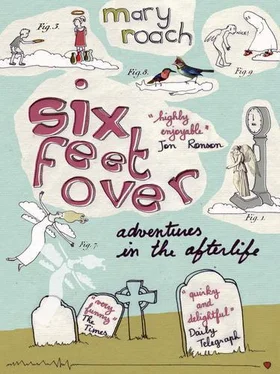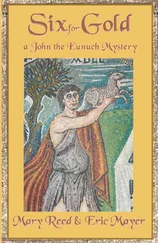Like most biologists of his day, Harvey was limited by his equipment. He couldn’t see what was going on at the cellular level. He couldn’t see sperm. He had a magnifying glass, but what he needed was a microscope. And so it is not surprising that the next milestone fell to Antoni van Leeuwenhoek: the man who loved microscopes. Leeuwenhoek did not invent the microscope, nor was he a scientist by training. The Dutchman worked as an accountant for a haberdasher and, later, as Chamberlain of the Council-Chamber of the Worshipful Sheriffs of Delft, which is a ten-gallon way of saying that he tidied the chamber. The post left him plenty of time for hobbies, of which he had just one: grinding lenses and building microscopes. The microscopes Leeuwenhoek built were superior to those of the main maker of the day, and soon they were in demand by members of the Royal Society of London for the Improving of Natural Knowledge, more or less the National Science Foundation of its day. Over time, the Royal Society began publishing Leeuwenhoek’s letters about his findings as well, and he was on his way to a historical, if unpaid, career as the founding father of microbiology.
In 1675, Leeuwenhoek discovered a universe of up-to-then-unknown creatures—bacteria and protozoa, mostly—in drops of stagnant water in a “water-butt” in his yard. He named them animalcules. It is difficult to properly appreciate the wonder and strangeness of this discovery. Think of scientists today discovering Martian life. Leeuwenhoek was appropriately awed. “For me this was among all the marvels that I discovered in nature the most marvelous of all, and I must say, that for my part, no more pleasant sight has met my eye than this of so many thousands of living creatures in one small drop of water.”
Leeuwenhoek bravely turned his instrument upon himself. “My teeth are not so cleaned…” he wrote, “but what there sticketh or groweth between some of my front ones and my grinders… a little white matter, which is as thick as if ’twere batter.” He mixed some of this batter with fresh rainwater and looked at a smear under the microscope. Did he find animalcules? You bet your water-butt he did. “All the people living in our United Netherlands,” he concluded, “are not as many as the living animals that I carry in my own mouth.” It is a testament to Leeuwenhoek’s love of biology that he could describe the bacteria in tooth scum as “very prettily a’moving.”
In a further exploration of oral fauna and the limits of spousal patience, Leeuwenhoek headed into the mouth of his wife, Cornelia, and their daughter Maria. “I examined… a little of the matter that I picked out with a needle from betwixt their teeth.” Next he recruited an old man who had “never washed his mouth in all his life” and noted that while his spittle held a normal number of these animalcules, the matter between his teeth held “an unbelievably great company of living animalcules.” Day by day, the foundations of modern oral hygiene took shape under Leeuwenhoek’s lens. He noted the relationship between a “stinking mouth” and “the animals living in the scum on the teeth.” In a three-hundred-years premature dig at Listerine, he observed that while wine-vinegar killed spittle animalcules on contact, it “didn’t penetrate through all the matter that is firmly lodged between the front teeth or the grinders and killed only those animalcules that were in the outermost parts of the white matter.”
While the fellows of the Royal Society were politely attentive to Leeuwenhoek’s oral safaris, they encouraged him to move on to the rest of man’s moistnesses. In particular, they wanted him to examine semen. Perhaps it would be possible at last to view the material of the human soul! Leeuwenhoek refused. “He questioned the propriety of writing about semen and intercourse,” wrote E. G. Ruestow in an article in the Journal of the History of Biology . Several years later, a medical student presented Leeuwenhoek with a vial of semen from a gonorrheaic man. (Hey, thanks! ) The student said he’d found within it small animals with tails, which he assumed were related to the gonorrhea. Leeuwenhoek suspected otherwise, and set about examining his own semen. In a 1677 letter describing his findings, Leeuwenhoek was careful to point out that the material was a “residue after conjugal coitus,” and not the product of “sinfully defiling myself.”
In that letter Leeuwenhoek sets forth the first scientific description of sperm: animalcules so small that “a million of them would not equal in size a large grain of sand….” He describes the apparent difficulties of swimming in semen, noting that the animals had to “lash their tails eight or ten times before they could advance a hair’s-breadth.” He included eight drawings of “the little animals in the seed,” some with tails straight, looking like hat pins, others with winding sine-wave tails, clearly struggling against the custardy tide.
Then he commenced to tread the path that would lead to his biggest career blunder. He claimed to see a network of vessels within the sperm bodies, and imagined that it held the beginnings of all the organs that the human would one day possess. This line of thinking—called preformationism—would prove enormously popular and to this day provides publishers of embryology textbooks with irresistible images for their historical chapters: old woodcuts and engravings of sperm with microscopic humans inside, heads down and knees drawn up to their chests, like cramped, napping stowaways. One of these likely influenced Leeuwenhoek. He had received a letter from a French aristocrat named François de Plantade, which included two drawings of the miniature people inside sperm. In this case, they were depicted outside of their sperm hulls, standing with their hands crossed demurely over their little private parts. On their heads are what appear to be small hats or hooks, giving them the appearance of adorable human bracelet charms.
Though Leeuwenhoek himself never managed to find the preformed people inside sperm—despite having tried at one point to peel the “skin” off one—he came to believe they were in there. He believed that each sperm held a soul with the potential to become a human life, and that the woman’s role in reproduction was merely to receive and nourish the perfectly formed miniature human. (Leeuwenhoek wasn’t the first to espouse this line of thought. Hippocrates took the no doubt breakfast-inspired view that the egg was simply something for the developing human to eat. He further speculated that as soon as the egg was all eaten up, then the infant would hatch: birth as a sort of grocery-shopping trip.)
Leeuwenhoek was what became known as a spermist. The label suggests that there were ovists for the spermists to argue with over dinner, and indeed there were. I learned about the ovist-spermist debate in an amazing book called The Ovary of Eve , by Clara Pinto-Correia, who has the audacity to be both a literary success and a respected developmental biologist. I don’t know what Clara hatched from, but clearly better stuff than I.
The ovists pointed to the spherical shape of the ovum as befitting its lofty mission. The sphere is the shape of the planets and the stars: God’s perfect form. (Whereas sperm look like worms.) Leeuwenhoek took a different view. He didn’t think of ova as spheres; he thought of them as globules. “Do we not see that all excrements, discharged either by human beings or animals, consist of globules…?” he wrote. “And… we see that fat, pus, and certain parts of a horse’s urine also consist of globules.” This from the man who didn’t want to write about semen.
The ovum’s main shortcoming as the vessel of humanity was that it derived from the woman, who was in those days (more) universally considered a second-class organism. “If ovism was the true system of reproduction, God was sending a mixed message,” writes Pinto-Correia. “He had locked us inside perfection. And then he had locked perfection inside imperfection.”
Читать дальше











